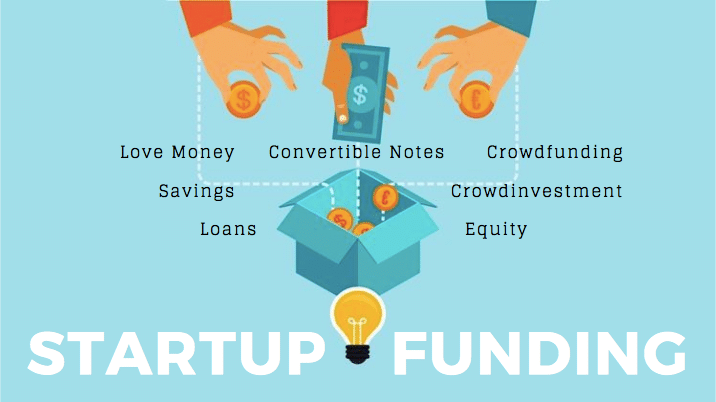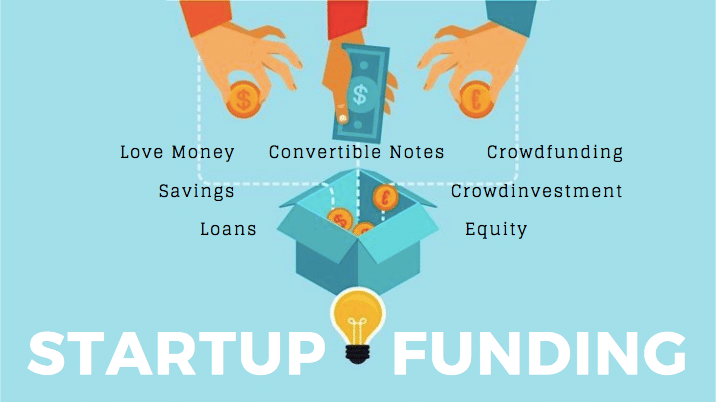
Le financement est un élément essentiel auquel tout entrepreneur doit se préparer. Il permet à chaque startup de passer du stade de l’idée à celui de la planification, de la création et enfin le développement de l’entreprise.
Financer votre startup
Il existe trois grandes catégories de financement : le “bootstrapping” , la dette et l’équité (les capitaux de fonds propres).
Bootstrapping
Cela comprend la réduction au minimum des dépenses dans les finances personnelles et d’entreprise. La dette couvre les prêts bancaires, les crédits commerciaux et les emprunts auprès d’amis/famille (alias “love money”). Les capitaux propres comprennent les placements collectifs, les billets convertibles et même les fonds provenant d’amis ou de membres de la famille, selon votre entente.
Se préparer pour le financement
Avant de chercher et de choisir une source de financement, l’étape la plus importante pour chaque entrepreneur est de créer un plan d’affaires. La définition d’objectifs et d’étapes permet une projection plus précise des besoins financiers d’une personne, en particulier le budget minimum nécessaire pour au moins la première année d’existence de votre startup. Les fondateurs, ainsi que leurs co-fondateurs, doivent également évaluer leur situation financière actuelle. Une évaluation aussi précise que possible de votre point de départ et de vos besoins à court et à long terme permet d’obtenir une évaluation financière plus solide.
Quelques questions à prendre en compte : De combien d’argent aurez-vous besoin ? Allez-vous vous consacrer à votre nouvelle entreprise à temps plein ou à temps partiel ? Si vous choisissez de le faire à temps plein, vous devrez peut-être obtenir un financement initial plus important pour couvrir les frais d’exploitation.
Voici quelques sources de financement que les fondateurs peuvent envisager. Les sources peuvent être combinées en fonction du montant nécessaire après une évaluation budgétaire.
Sources de financement
Love Money
La source de financement la plus accessible est la “love money”. C’est un capital que vous avez accordé à votre entreprise et dont la source est la famille ou les amis. L’accord autour des fonds est souvent personnalisé en fonction du type particulier de relations entre les deux parties.
Comme vos amis et votre famille vous connaissent déjà – vos valeurs, votre personnalité et peut-être même votre éthique de travail ainsi qu’un certain niveau de confiance est déjà établi, ce qui en fait souvent la source de soutien la plus probable pour votre entreprise lorsque vous débutez.
En dehors de votre entourage immédiat, vous pouvez aussi vous tourner vers d’anciens collègues ou d’autres anciens élèves comme investisseurs potentiels dans votre entreprise.
Discutez des conditions avec eux de façon informelle, mais essayez d’établir s’il s’agit d’un investissement ou simplement d’un prêt. Il n’est pas nécessaire de préciser les termes de l’entente commerciale, mais le fait de clarifier les modalités de leur participation à votre projet et les attentes à son égard vous aidera à établir une bonne relation à long terme.
Billets convertibles
Une autre source de financement est un billet convertible, une forme de dette à court terme qui se convertit par la suite en capitaux propres. Pourquoi utiliser des billets convertibles ? Les billets convertibles impliquent une mise en place plus rapide et une entente plus simple. D’une part, ça ne nécessite pas d’une pré-évaluation d’une entreprise au moment de la compensation pour les investisseurs. De plus, cette méthode évite ou minimise le transfert du contrôle aux investisseurs. Dans l’ensemble, ça permet un certain degré de flexibilité des conditions par rapport à d’autres accords plus formels.
L’utilisation de billets convertibles peut s’avérer difficile lorsqu’on ne connaît pas bien leur fonctionnement. Comprendre cela peut prendre un certain temps, mais cela peut être une source de financement utile pour n’importe quelle entreprise. Voici un très bon article sur les billets convertibles avec des scénarios différents sur la couverture et les modalités de l’entente.
Crowdfunding or Crowdinvesting
Le Crowdfunding et le Crowdinvesting sont deux méthodes de collecte de fonds qui permettent d’accéder à un plus grand nombre d’investisseurs. Par rapport à d’autres méthodes, elles permettent d’économiser du temps et de l’argent. Ils vous aident également à éviter de vous endetter en cas d’échec du lancement d’une entreprise.
Le crowdfunding est une méthode de promotion d’un produit ou d’un service auprès du grand public. Le soutien que reçoit toute campagne de crowdfunding est déjà un moyen de validation commerciale d’un produit/service. Voici quelques défis à relever dans le cadre d’une campagne de Crowdfunding :
- Vous avez besoin d’une histoire engageante. La valeur d’une idée d’entreprise doit être communiquée efficacement au marché.
- Peu familier avec le crowdfunding ou la plateforme elle-même. Les entreprises peuvent avoir besoin d’éduquer leur marché cible/leurs contributeurs potentiels au sujet du financement par la foule.
- Prise en compte des frais de paiement pour les plates-formes à utiliser
Voici un guide rapide pour une campagne de financement populaire réussie :
- Obtenir de la famille et des amis un financement pour un meilleur démarrage et une plus grande visibilité.
- Présenter un plan d’affaires réaliste qui montre comment l’argent des donateurs permettra à l’entreprise de passer à l’étape suivante.
- Soyez actif en ligne tout au long de la période de la campagne dans tous les canaux (répondez aux demandes de renseignements, faites de la promotion continue, suivez les progrès).
Les sites Web de crowdfunding les plus populaires sont Kickstarter et Indiegogo. Pour un guide plus complet, voici un article sur le Crowdfunding.
Le crowdinvesting est un crowdfunding basé sur les fonds propres ; il est similaire au crowdfunding mais s’adresse plutôt aux investisseurs. Le crowdinvesting élargit l’accès d’une start-up aux investisseurs potentiels, y compris les investisseurs individuels. De plus, il n’est pas nécessaire d’avoir une évaluation de l’entreprise pour obtenir le soutien nécessaire.
Le crowdinvesting a aussi ses propres contraintes, avec la nécessité de prendre en compte les facteurs suivants :
- Preuve de concept et traction sur le marché (nécessaire dès le départ, contrairement au crowdfunding)
- Projections financières
- Les modalités de l’entente doivent être explicitement définies – elles ne peuvent être modifiées par la suite.
- Les relations avec les investisseurs sont de la plus haute importance. Les fondateurs/propriétaires d’entreprises doivent les construire et les entretenir.
FundedByMe et Seedrs sont des exemples de portails de crowdinvesting. Voici un article supplémentaire qui peut être utilisé comme guide pour mener à bien une campagne de crowdinvestment réussie.
Évaluation des options de financement
Chaque source a ses propres défis. La clé est d’évaluer quelle méthode de collecte de fonds convient à votre situation actuelle et à vos objectifs d’affaires. Il existe plusieurs autres options de financement, traditionnelles et non traditionnelles. Quelle que soit la méthode que vous choisirez pour votre startup, assurez-vous de faire des recherches approfondies et soyez prêt à répondre aux questions des investisseurs potentiels.










